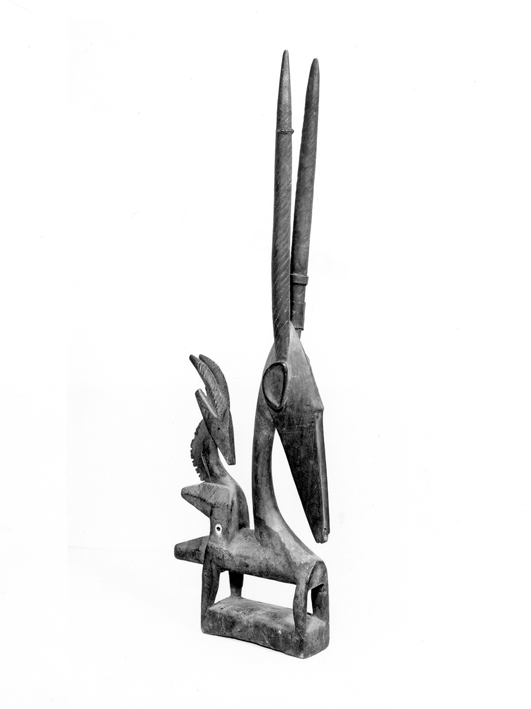
Mali, Bamana people, 1st half of 20th century
Chi Wara-Headcrest in Form of an Antelope
Wood
Gift of Allan Gerdau (78.261)
Height: 132cm
Additional images may be viewed in Argus
Guiding Questions
Take a moment and look at these pieces of art. How are they are similar and how they are different?
How do you think these objects might have been used?
What do you think these objects might depicting?
About the Art
These are head crests are worn by the Bamana people of Mali in Africa during a ritual dance. The head crests represent the spirit of chi-wara, a mythical being who is part human and part antelope. The chi-wara taught humans how to farm the land, but left after humans grew careless and wasteful. The Bamana people created the chi-wara headcrests and dance as a way to commemorate the gift of the chi-wara spirit.
The Bamana males wear the headcrests and perform the chi wara dance at times of planting and harvest. These crests are attached to wicker caps and are worn atop the head, along with a full body-concealing costume made of raffia that represents water. The dancers make leaping and ground-pawing motions in imitation of antelope. The male chi-wara have curved horns and open-work designs. The female have straight horns and carry a baby antelope on their back. The male chi-wara symbolizes the sun, strength, and growth. The female symbolizes the earth and the plowed field.
Connections
The Bamana Antelope headcrest shows the same animal as Paik’s Anten-nalope. How are they similar or different? Which do you think looks more like the real animal?
Additional Resources
Another example of Chi-wara headdress with additional information:
Metropolitan Museum of Art: http://www.metmuseum.org/toah/works-of-art/1978.412.435
Art of Africa Learning Resources, St. Louis Art Museum: http://www.slam.org/Africa/index.html

Bamana masqueraders with chi wara headdress
Bamako region, Mali
Photograph by Eliot Elisofon, 1971
National Museum of African Art
Smithsonian Institution

Headcrest in Form of an Antelope with Kid (chi wara)
Mali, Bamana people, 1st half of 20th century
Wood
Gift of Samuel Rubin (61.85.2)
Height: 76 cm